AnandTech Article Channel |
- Intel SSD 525 Review (240GB)
- Updating AnandTech’s 2013 Mobile Benchmark Suite (RFC)
- Slightly Smaller Apple TV 3,2 (A1469) Contains A5X SoC, BCM4334 Combo
- AMD Catalyst 13.2 Beta 3 Drivers Released
- HP Leaks Their First Chromebook
- Trio of New Gigabyte Server Motherboards Announced
| Posted: 29 Jan 2013 09:42 PM PST The mSATA SSD space has been heating up over the past year as Ultrabooks and other small form factor devices like Intel’s NUC have continued to grow in popularity. While mostly a placeholder until M.2 (formerly NGFF) SSDs show up on the market, mSATA drives are currently the only solution if you need a standardized small form factor 6Gbps SATA SSD. Due to physical limitations, the largest mSATA SSDs on the market today are still 240/256GB as there’s only room for 4 NAND packages (8 x 8GB die per package). The transition to 128Gbit NAND die will double this to 480/512GB so I’d expect that limit to be broken in the next quarter or two. Although there are capacity limitations, there are no real performance limitations to delivering an mSATA SSD. As we found in our review of Micron’s mSATA C400, you can deliver the same performance as a 2.5” SSD in the mSATA form factor. It’s a pretty amazing thing to think about. You get more performance out of a tiny mSATA SSD than out of a stack of 10K RPM hard drives. Intel has been dabbling in the mSATA space for a while now. Until Monday the fastest mSATA SSD Intel made was based on Intel’s first controller technology, but earlier this week that all changed with the announcement of the Intel SSD 525. Read on for our full review of the 525! |
| Updating AnandTech’s 2013 Mobile Benchmark Suite (RFC) Posted: 29 Jan 2013 05:45 PM PST If it seems like just last year that we updated our mobile benchmark suite, that’s because it was. We’re going to be keeping some elements of the testing, but with the release of Windows 8 We’re looking to adjust other areas. This is also a request for input (RFC = Request for Comments if you didn’t know) from our readers on benchmarks they would like us to run—or not run—specifically with regards to laptops and notebooks. We used most of the following tests with the Acer S7 review, but we’re still early enough in the game that we can change things up if needed. We can’t promise we’ll use every requested benchmark, in part because there’s only so much time you can spend benchmarking before you’re basically generating similar data points with different applications, and also because ease of benchmarking and repeatability are major factors, but if you have any specific recommendations or requests we’ll definitely look at them. General Performance Benchmarks We’re going to be keeping most of the same general performance benchmarks as last year. PCMark 7, despite some question as to how useful the results really are, is at least a general performance suite that’s easy to run. (As as side note, SYSmark 2012 basically requires a fresh OS install to run properly, plus wiping and reinstalling the OS after running, which makes it prohibitively time consuming for laptop testing where every unit comes with varying degrees of customization to the OS that may or may not allow SYSmark to run.) We’re dropping PCMark Vantage this year, mostly because it’s redundant; if Futuremark comes out with a new version of PCMark, we’ll likely add that as well. At least for the near term, we’re also including results for TouchXPRT from Principled Technologies; this is a “light” benchmark suite designed more for tablets than laptops (at least in our opinion), but it does provide a few other results separate from a monolithic suite like PCMark 7. We’ll also include results from WebXPRT for the time being, though again it seems more tablet-centric. We don’t really have any other good general performance benchmarking suites, so for other general performance benchmarks we’ll return once again to the ubiquitous Cinebench 11.5 and x264 HD. We’re updating to x264 HD 5.x, however, which does change the encoding somewhat, and if a version of x264 comes out with updated encoding support (e.g. for CUDA, OpenCL, and/or Quick Sync) we’ll likely switch to that when appropriate. We’re still looking for a good OpenCL benchmark or two; WinZip sort of qualifies, but unfortunately we’ve found in testing that 7-zip tends to beat it on file size, compression time, or both depending on the settings and files we use. On the graphics side of the equation, there doesn’t seem to be a need to benchmark every single laptop on our gaming suite—how many times do we need to see how an Ultrabook with the same CPU and iGPU runs (or doesn’t run) games?—so we’ll continue using 3DMark as a “rough estimate” of graphics performance. As with PCMark, we’re dropping the Vantage version, but we’ll continue to use 3DMark06 and 3DMark 11, and we’ll add the new version “when it’s done”. We’re considering the inclusion of another 3D benchmark, CatZilla (aka AllBenchmark 1.0 Beta19), at the “Cat” and “Tiger” settings, but we’d like to hear feedback on whether it makes sense or not. Finally, we’ll continue to provide analysis of display quality, and this is something we really hope to see improve in 2013. Apple has thrown down the gauntlet with their pre-calibrated MacBook, iPhone, iPad, and iMac offerings; if anyone comes out with a laptop that charges Apple prices but can’t actually match Apple on areas like the display, touchpad, and overall quality, you can bet we’ll call them to the carpet. Either be better than Apple and charge the same, or match Apple and charge less, or charge a lot less and don’t try to compete with Apple (which is a dead-end race to the bottom, so let’s try to at least have a few laptops that eschew this path). Battery Benchmarks As detailed in the Acer S7 review, we’re now ramping up the “difficulty” of our battery life testing. The short story is that we feel anything less than our previous Internet surfing test is too light to truly represent how people use their laptops, so we’re making that our Light test. For the Medium test, we’ll be increasing the frequency of page loads on our Internet test (from every 60 seconds down to every 12 seconds) and adding in playback of MP3 files. The Heavy test is designed not as a “worst-case battery life” test but rather as a “reasonable but still strenuous” use case for battery power, and we use the same Internet test as in the Medium test but add in looped playback of a 12Mbps 1080p H.264 video with a constant FTP download from a local server running at ~8Mbps (FileZilla Server with two simultaneous downloads and a cap of 500KBps, downloading a list of large movie files). Other aspects of our battery testing also warrant clarification. For one, we continue to disable certain “advanced” features like Intel’s Display Power Saving Technology (which can adjust contrast, brightness, color depth, and other items in order to reduce power use). The idea seems nice, but it basically sacrifices image quality for battery life, and since other graphics solutions are not using these “tricks” we’re leaving it enabled. We also disable refresh rate switching, for similar reasons—testing 40Hz on some laptops and 60Hz on others isn’t really apples-to-apples. Finally, we’re also moving from 100 nits brightness to 200 nits brightness for all the battery life testing, and the WiFi and audio will remain active (volume at 30% with headphones connected). Gaming Benchmarks In truth, this is the one area where there is the most room for debate. Keep in mind that when testing notebooks, we’re not solely focused on GPU performance most of the time (even with gaming notebooks); the gaming tests are only a subset of all the benchmarks we run. We’ll try to overlap with our desktop GPU testing where possible, but we’ll continue to use 1366x768 ~Medium as our Value setting, 1600x900 ~High as our Mainstream setting, and 1920x1080 ~Max for our Enthusiast setting. Beyond the settings however is the question of which games to include. Ideally, we’d like to have popular games that also tend to be strenuous on the graphics (and possibly the CPU as well). A game or benchmark that is extremely demanding of your graphics hardware that few people actually play isn’t relevant, and likewise a game that’s extremely popular but that doesn’t require much from your hardware (e.g. Minecraft) is only useful for testing low-end GPUs. We would also like to include representatives of all the major genres—first person shooter/action, role-playing, strategy, and simulation—with the end goal of having ten or fewer titles (and for laptops eight seems like a good number). Ease of benchmarking is also a factor; we can run FRAPS on any game, but ideally a game with a built-in benchmark is both easier to test and produces more reliable/repeatable results. Frankly, at this point we don’t have all that many titles that we’re really set on including, but here’s the short list. Elder Scrolls: Skyrim: We’ve been using this title since it came out, and while it may not be the most demanding game out there, it is popular and it’s also more demanding (and scalable) than most other RPGs that come to mind. For example, Mass Effect 3 generally has lower quality (also DX9-only) graphics and doesn’t require as much from your hardware, and The Witcher 2 has three settings: High, Very High, and Extreme (not really, but it doesn’t scale well to lower performance hardware). Skyrim tends to hit both the CPU and GPU quite hard, and even with the high resolution texture pack it can still end up CPU limited on some mobile chips. Regardless of our concerns, however, we can’t think of a good RPG replacement, so our intention is to keep Skyrim for another year. Far Cry 3: This is an AMD-promoted title, which basically means they committed some resources to helping with the games development and/or advertising. In theory, that means it should run better on AMD hardware, but as we’ve seen in the past that’s not always the case. This is a first-person shooter that has received good reviews and it’s a sequel to a popular franchise with a reputation for punishing GPUs, making it a good choice. It doesn’t have a built-in benchmark, so we’ll use FRAPS on this one. Sleeping Dogs: This is another AMD-promoted title. This is a sandbox shooter/action game with a built-in benchmark, making it a good choice. Yes, right now that's two for AMD and none for NVIDIA, but that will likely change with the final list. Sadly, that’s all we’re willing to commit to at this point, as all of the other games under consideration have concerns. MMORPGs tend to be a bit too variable, depending on server load and other aspects, so we’re leaving out games like Guild Wars 2, Rift, etc. For simulation/racing games, DiRT: Showdown feels like a step back from DiRT 3 and even DiRT 2; the graphics are more demanding, yes, but the game just isn’t that fun (IMO and according to most reviews). That means we’re still in search of a good racing game; Need for Speed Most Wanted is a possibility, but we’re open for other suggestions. Other titles we’re considering but not committed to include Assassin’s Creed III, Hitman: Absolution, and DmC: Devil May Cry; if you have any strong feelings for or against the use of those titles, let us know. Crysis 3 will hopefully make the grade this time, as long as there's no funny business at launch or with the updates (e.g. no DX11 initially, and then when it was added the tessellation was so extreme that it heavily favored NVIDIA hardware, even though much of the tessellation was being done on flat surfaces). Finally, we’re also looking for a viable strategy game; Civ5 and Total War: Shogun 2 could make a return, or there are games like Orcs Must Die 2 and XCOM: Enemy Unknown, but we’re not sure if either meet the “popular and strenuous” criteria, so we may just hold off until StarCraft II: Heart of the Swarm comes out (and since that games on “Blizzard time”, it could be 2014 before it’s done, though tentatively it’s looking like March; hopefully it will be able to use more than 1.5 CPU cores this time). Closing Remarks As stated at the beginning, this is a request for comments and input as much as a list of our plans for the coming year. If you have any strong feelings one way or the other on these benchmarks, now is the time to be heard. We’d love to be able to accommodate every request, but obviously there are time constraints that must be met, so tests that are widely used and relevant are going to be more important than esoteric tests that only a few select people use. We also have multiple laptop reviewers (Dustin, Jarred, and occasionally Vivek and Anand), so the easier it is to come up with a repeatable benchmark scenario the better. Remember: these tests are for laptops and notebooks, so while it would be nice to do something like a compilation benchmark, those can often take many hours just to get the right files installed on a system, which is why we’ve shied away from such tests so far. But if you can convince us of the utility of a benchmark, we’ll be happy to give it a shot. |
| Slightly Smaller Apple TV 3,2 (A1469) Contains A5X SoC, BCM4334 Combo Posted: 29 Jan 2013 02:33 PM PST Yesterday along with iOS 6.1 being pushed to iPhones, iPads, and iPod Touches, Apple released an update to the Apple TV 2,1 and 3,1, and curiously enough released another image for an unannounced Apple TV 3,2 product with model A1469. Originally it was assumed this was an international release with minimal changes, however it turns out there's much more inside, including an A5X SoC and BCM4334 (up from BCM4330) WLAN and BT. Matthew Panzarino from The Next Web pinged me about the FCC documents posting and whether there were any changes inside, which piqued my interested and made me dig a little deeper. First, the Apple TV 3,2 model is slightly smaller, as noted by Engadget. Inside however from what we can glean from the FCC documents there's no longer a two antenna solution for the BCM4330 WiFi+BT combo, but rather a single antenna solution with different gain and utilizing a BCM4334 combo instead. This is the same WLAN+BT combo as used in the iPhone 5 and basically all of the newly refreshed iDevices, and is built on a 40nm RF CMOS process. Since the previous antennas were a part of the Apple TV PCB, and the FCC disclosure notes that the new Apple TV uses a single PIFA (Planar Inverted F Antenna), it's highly likely we're looking at a completely different PCB. That fact intrigued me and made me take a look inside the Apple TV 3,2 IPSW, which contained exactly what I was looking for. Instead of the A5R2 SoC (S5L8942) inside the Apple TV 3,1, this new device contains an A5XR2 SoC (S5L8947) as shown in the screenshots I've taken of the Restore.plist file, though there are numerous others. It's entirely possible that Apple is again using different bins of the A5X, it's not possible to tell whether CPU or GPU cores are fused off at this point from my digging through the IPSW. Update: I should note that S5L8945 is the original 45nm Samsung produced A5X, S5L8947 is the A5XR2 that is in this unannounced Apple TV. Note that previously the A5 underwent a similar plus 2 offset, from S5L8940 (A5) to S5L8942 (A5R2) which changed process geometry from 45nm to 32nm HK-MG at Samsung. It's possible we're also looking at a process node change with the A5X to A5XR2 here. This is an interesting silent update and development for the Apple TV. Given the IPSW release onto the web before an actual hardware announcement, I originally suspected this was a silent upgrade of the Apple TV platform to newer hardware, however the presence of an A5X SoC inside makes things a bit more curious. Hopefully we will see an official announcement in the next few days.
|
| AMD Catalyst 13.2 Beta 3 Drivers Released Posted: 29 Jan 2013 01:00 PM PST As promised alongside last week’s release of the Catalyst 13.1 WHQL drivers, AMD has shipped out the first public beta for the next version of their drivers this week, Catalyst 13.2 Beta 3. The latest beta makes a couple of additions that will be of particular interest to hardcore gamers. On the application support side, like NVIDIA’s beta release yesterday these are the first drivers that specifically target Crysis 3, itself having just been released in beta form as a multiplayer beta. AMD is citing up to a 15% performance improvement here in scenarios with high degrees of MSAA, while promising further improvements as the game and the drivers both march towards a final state. Meanwhile these drivers are also the first driver set from AMD to address some of the frame latency issues Tech Report’s Scott Wasson has turned up over the last couple of months. His own testing of an earlier version of these drivers found that frame latency was significantly reduced in a few different games he tested, including Skyrim, Boderlands 2, and Guild Wars 2. As always, these latest drivers are available directly from AMD’s site. |
| HP Leaks Their First Chromebook Posted: 29 Jan 2013 07:57 AM PST Google's venture into the desktop operating system space has been getting a lot of the right kind of attention lately. Acer's C7 Chromebook has been well received, as has the latest Samsung Chromebook. Google announced that their security competition, Pwnium, would be focused on Chrome OS. And now HP has let slip that they'll be building a Chromebook of their own. Tagged the HP Pavilion Chromebook, the 14-inch screen provides more screen than Chrome OS has seen on a laptop before, but the same 1366x768 resolution limits the value of that real estate. The internals will look familiar; it has the same Intel Celeron 847, and 2GB of RAM, as Acer's C7. The HP model comes with a 16GB solid state drive, in lieu of the Acer's mechanical drive. The 37WHr battery reportedly offers a modest 4 hours and 15 minutes of longevity, similar to the Acer C7. So, once again, not a road warrior, but enough perhaps to serve a lightweight user's needs. When and how much? The original leak's been pulled, but it looks like the HP Chromebook will premier on February 17th for $329.99. That MSRP puts it above the Acer that it resembles, but for those that like the idea of a larger keyboard and screen the increase could be worth the added cost. We'll be interested to find out how it does. |
| Trio of New Gigabyte Server Motherboards Announced Posted: 29 Jan 2013 03:01 AM PST We recently reviewed a dual processor setup using the Gigabyte GA-7PESH1 and a pair of socket 2011 Xeons, with varied reactions from the point of view of a need for ultimate throughput with a simple to intermediate knowledge of NUMA programming. Today Gigabyte has announced the successors to the GA-7PESH1 and GA-7PESH2 in the form of the 4-way GPU supporting GA-7PESH3 and GA-7PESH4, along with a 3-way 1P model, the GA-6PXSV4. The main feature Gigabyte wish to promote is the improved memory compatibility; specifically noting that they are the only manufacturer to support a system fully populated with DDR3-1600MHz 16GB RDIMM 1.35V modules. The GA-7PESH3 looks more like a normal 2P motherboard in terms of orientation, with each CPU supporting one module per channel and the PCIe layout designed for multi-PCI devices (think 3-way or 4-way dual slot GPUs, or 7-way single slot). The motherboard also contains an LSI controller for support up to eight SAS 6 Gbps drives, a full 7.1 audio solution and USB 3.0 functionality. The GA-7PESH4 model gives the full range of memory slots available, similar to the GA-7PESH1, but with an orientation change. The PCIe layout is clearly a little odd, with one at the top of the IO panel, and the power connectors are also in this area. The main selling point of the 7PESH4 is the inclusion of four Intel I350 Gigabit Ethernet ports. The GA-6PSXV4 takes the GA-7PESH4 in a single socket form, with the four Intel I350 Gigabit Ethernet ports, and the socket orientation at right angles to normal channel implementations. The layout supports 3-way GPU, but also includes a PCIe x1 slot as well as a PCI slot. Like the GA-7PESH3, we also get a series of USB 3.0 ports on the rear IO. All three boards are reported to have been designed for airflow design in mind, and each CPU is supported by a 6-phase power delivery (remember, no overclocking on server boards). We analyzed the Gigabyte management software package in our GA-7PESH1 review, which used the Advocent Server Management Interface for security, monitoring, and remote control, and expect these new models to be relatively similar. As always, Gigabyte server boards are currently B2B (business-to-business) only, but readers in the US can contact their local Gigabyte server branch here for more information regarding individual pricing. |
| You are subscribed to email updates from AnandTech To stop receiving these emails, you may unsubscribe now. | Email delivery powered by Google |
| Google Inc., 20 West Kinzie, Chicago IL USA 60610 | |

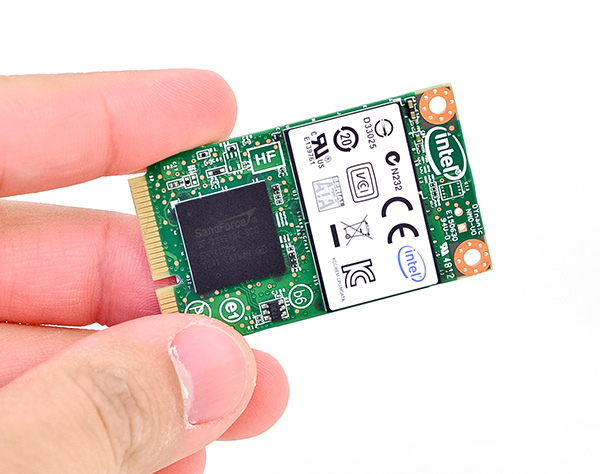


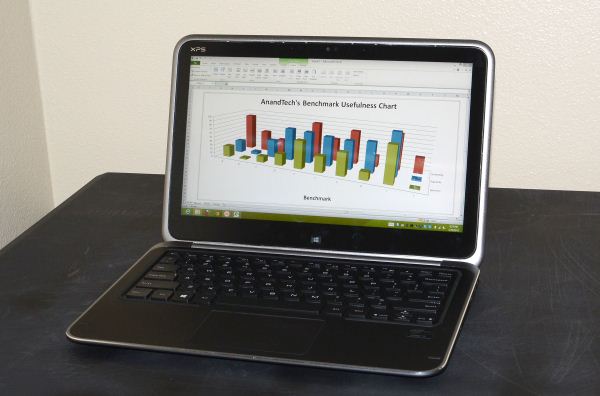
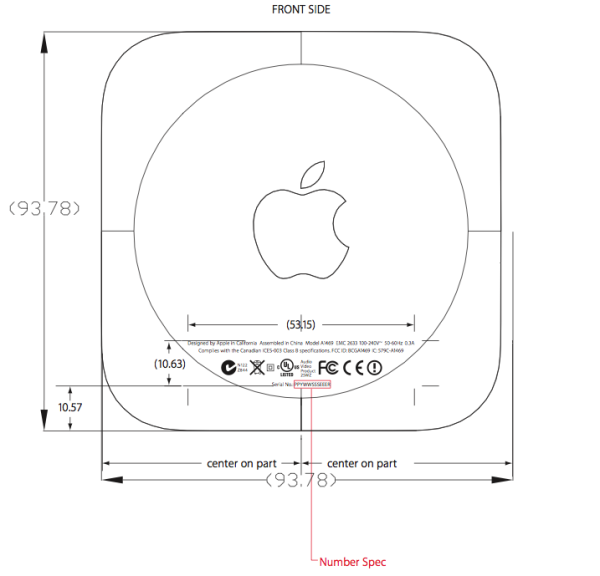
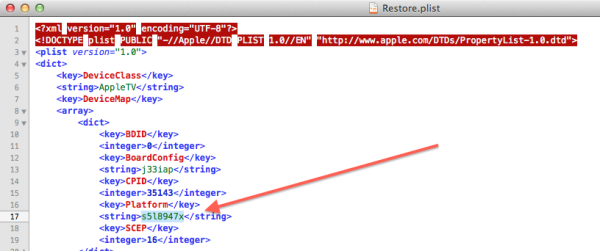



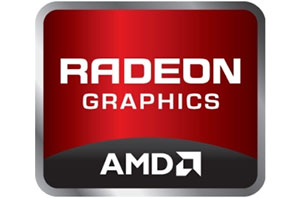

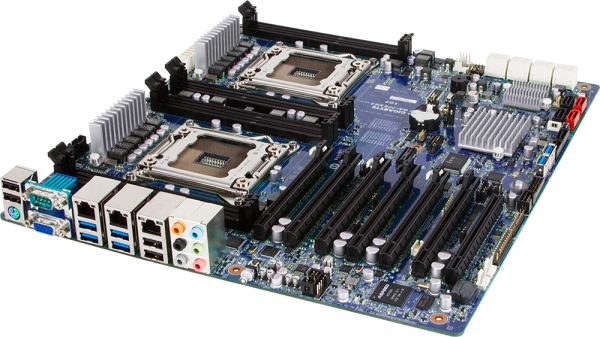
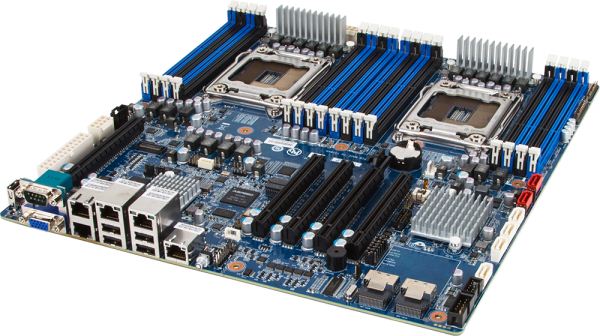
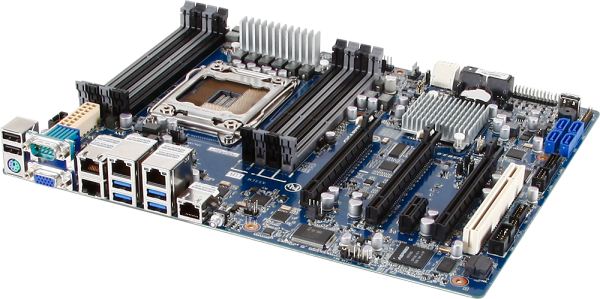
No comments:
Post a Comment